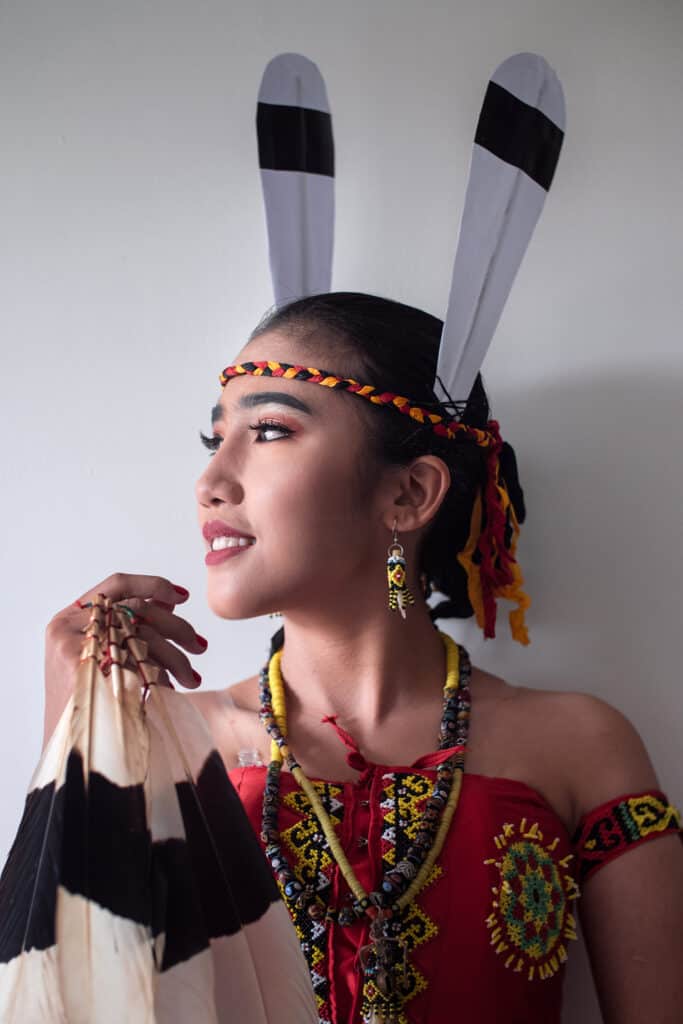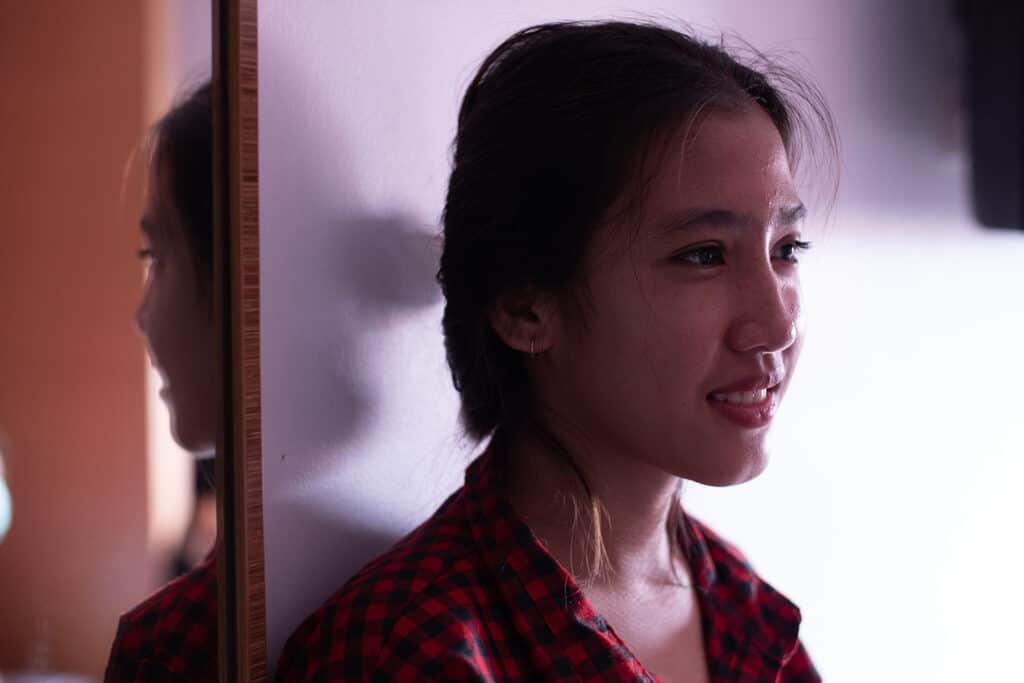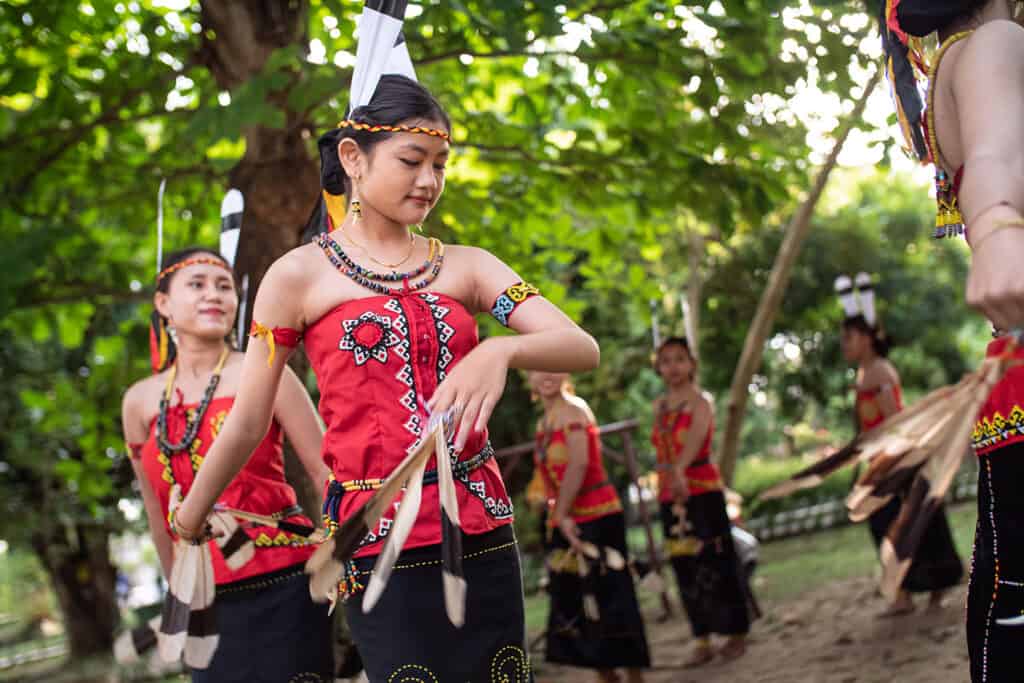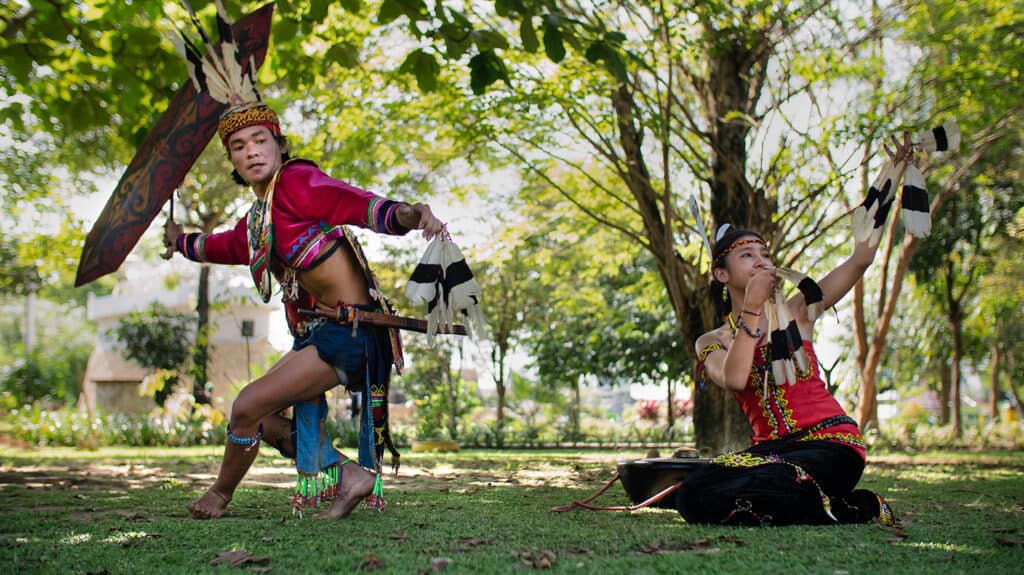Save the Orangutan and BOSF-RHO are working with indigenous people in Borneo to support them getting better living conditions and land rights that will also protect the rainforest. Part of that work is about identity and culture. Meet Febby from the Dayak Wehea tribe, who honors her culture through dance.

Febby presents a fan, which consists of beautiful bird feathers. It is an important prop when she participates in local dance competitions.
“I make my costumes with help from my friends and family. It took us five days to make my hornbill feather costume, which won 1st prize at this year’s fashion show competition,” she explains.
The hornbill bird is sacred to the indigenous people of Borneo and often acts as inspiration for traditional costumes and props that the Dayak Wehea people use for their dances.
Febby is 17 years old and part of the Dayak Wehea tribe. An indigenous people living in East Kalimantan on Borneo.
Read more: The importance of culture for the Dayak Wehea tribe
“I fear that my culture will disappear”
Dayak Wehea is one of the indigenous people that Save the Orangutan and our partners collaborate with to help them on the winding path towards being recognized as indigenous people and subsequently gaining the legal rights to the forest areas they have inhabited for generations.

However, the CISU-supported project that Save the Orangutan and BOSF-RHO are currently running with the Dayak Wehea tribe is not just about classic political work. The project focuses on highlighting the unique Dayak Wehea culture, which comes under increasing pressure as the tribe lose their forest areas to plantations. The culture is closely linked to nature.
The hope is that Dayak Wehea will regain confidence and trust that their culture needs to be preserved. Furthermore, a greater public awareness of the tribe can pave the way for being recognized as indigenous people.
Read more: Land rights – a key element in nature conservation
“I am scared that the Dayak Wehea culture will be lost in the future, because the youth is mainly hyped about trends from other countries, such as K-pop, and that could make our cultural identity fade away,“ Febby explains.
“The Dayak Wehea culture is important because it has been passed from our ancestors through many generations, and the traditions have existed long before we did. We need to pass it on to the next generations like my children or grand children, so the traditions will be preserved for a long time.”
Never misses a cultural event
Therefore, Febby makes an effort to ensure that her cultural heritage does not disappear. She does this by sticking to traditions and especially exercising her great passion: Dancing the traditional dances that Dayak Wehea is known for.
She started dancing when she was 4 years old, having watched fascinated while her mother danced the Dayak Wehea dances.
“I always join dance competitions. I have also joined several fashion show competitions in Muara Wahau as representative for my school, and I once won second place,” she says proudly.

The dances are often danced at traditional ceremonies, such as the rice harvest ceremony lom plai.
”I enjoy dancing the traditional Dayak Wehea dances at ceremonies, events, or rituals. I don’t want to miss any of these events, and I even ask the school for permission to leave class for the cultural events,” Febby says.
She believes it is perfectly okay to learn modern dances, but that must not mean that the dances that are tied to the cultural identity are lost. They should rather co-exist.
Read more: Indigenous people on Borneo celebrated their culture
Dances tell stories of the hornbill
Many of the dances express gratitude for the harvest and for nature. Just as the costumes are inspired by the hornbill, many of the movements are imitations of the long-billed bird.
”Traditional dances can tell stories through movements. These stories could be romantic tales about the hornbill bird, about planting rice, or the everyday life of our tribe. The solo dances may tell about the sadness of the hornbill birds, when they look for a mate. The couple dances imitate the romance of the hornbill. The Rhinoceros Hornbill is the symbol of the Dayak Wehea identity,” Febby explains.
It is this identity that Febby wants to cherish. It can strengthen unity, protect nature, and give the tribe what they do not yet have: official recognition that their culture exists and that they are an indigenous people.
Indigenous people are often linked to nature through their traditions, culture and way of life, and many studies have shown that nature is best preserved when indigenous people have the land rights. Research also indicates that there is often a correlation between a high cultural diversity and a high biological diversity.
